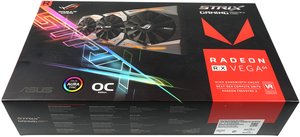 If we were asked for a slightly better equipped RX Vega64 and if the range of such cards were more diversified, we would probably call the Asus RX Vega64 Strix OC. Today's test will show where and how exactly the map is positioned.
If we were asked for a slightly better equipped RX Vega64 and if the range of such cards were more diversified, we would probably call the Asus RX Vega64 Strix OC. Today's test will show where and how exactly the map is positioned.
In contrast to Sapphire's heavyweight RX Vega64 Nitro+, the Asus RX Vega64 Strix OC is a rather inconspicuous card at first glance, but unlike the completely unlit Gigabyte RX Vega64 Gaming OC, it can still be illuminated at least later after unpacking. can bring.
With the currently still available Vega64 cards, however, one can no longer distinguish between individual positionings within this chip class due to the really already presusb prices. You can be happy if there is one. Interestingly, availability in Europe is often better than in North America or Asia, for example.
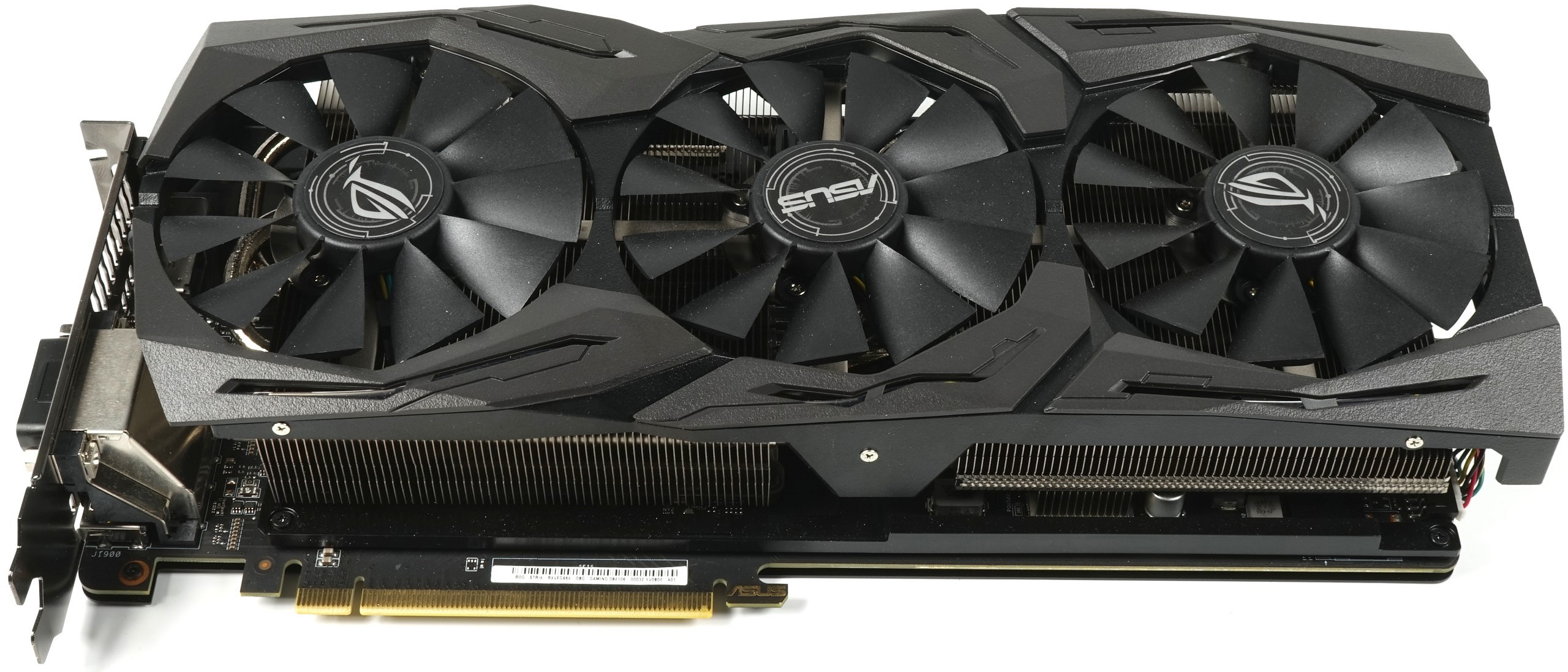
Unboxing, optics and haptics
Weighing 1286 grams, this card lies between the much lighter gigabytes and Sapphire's monstrous battleship. Asus has also not saved on the dimensions and offers a relatively long card with 30.2 cm installation length (outer surface slot panel until the end of the radiator cover). With a height of 12.7 cm (from the top of the motherboard slot to the top of the radiator cover, as well as a thickness of 4.5 cm from the board to the front of the radiator cover, this results in the image of a not exactly compact map.
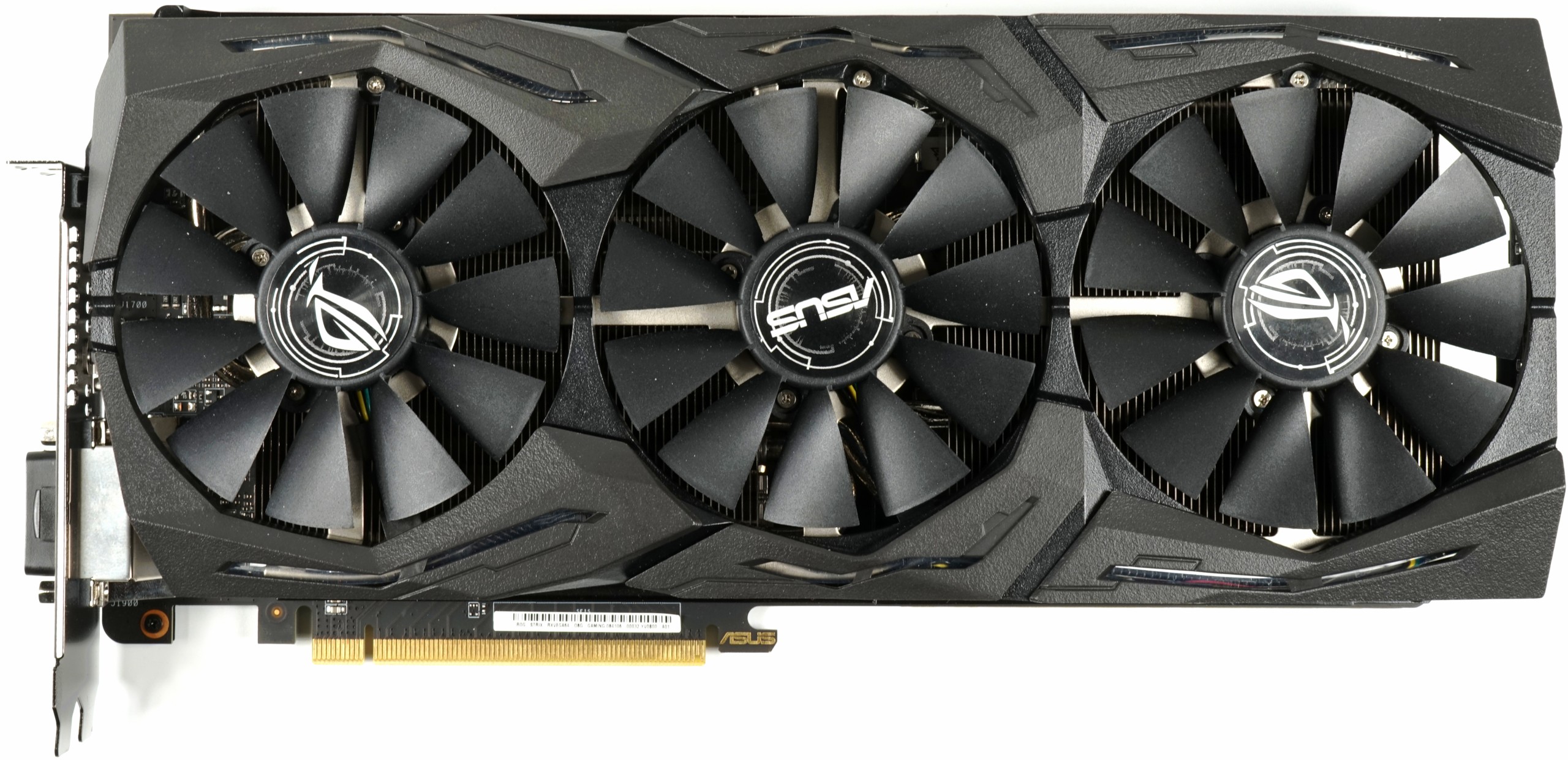
The three fans with a rotor blade diameter of 9 cm each sit in an opening with a diameter of 9.2 cm. A total of 11 rotor blades per fan, with their special shape, mainly provide airflow and turbulence and less static pressure. This should be helpful to the cooling concept.
The backplate is embossed with the RGB backlit ROG logo. The backplate, which is not used for cooling, is therefore optical in nature and also stabilizes the not very light card.
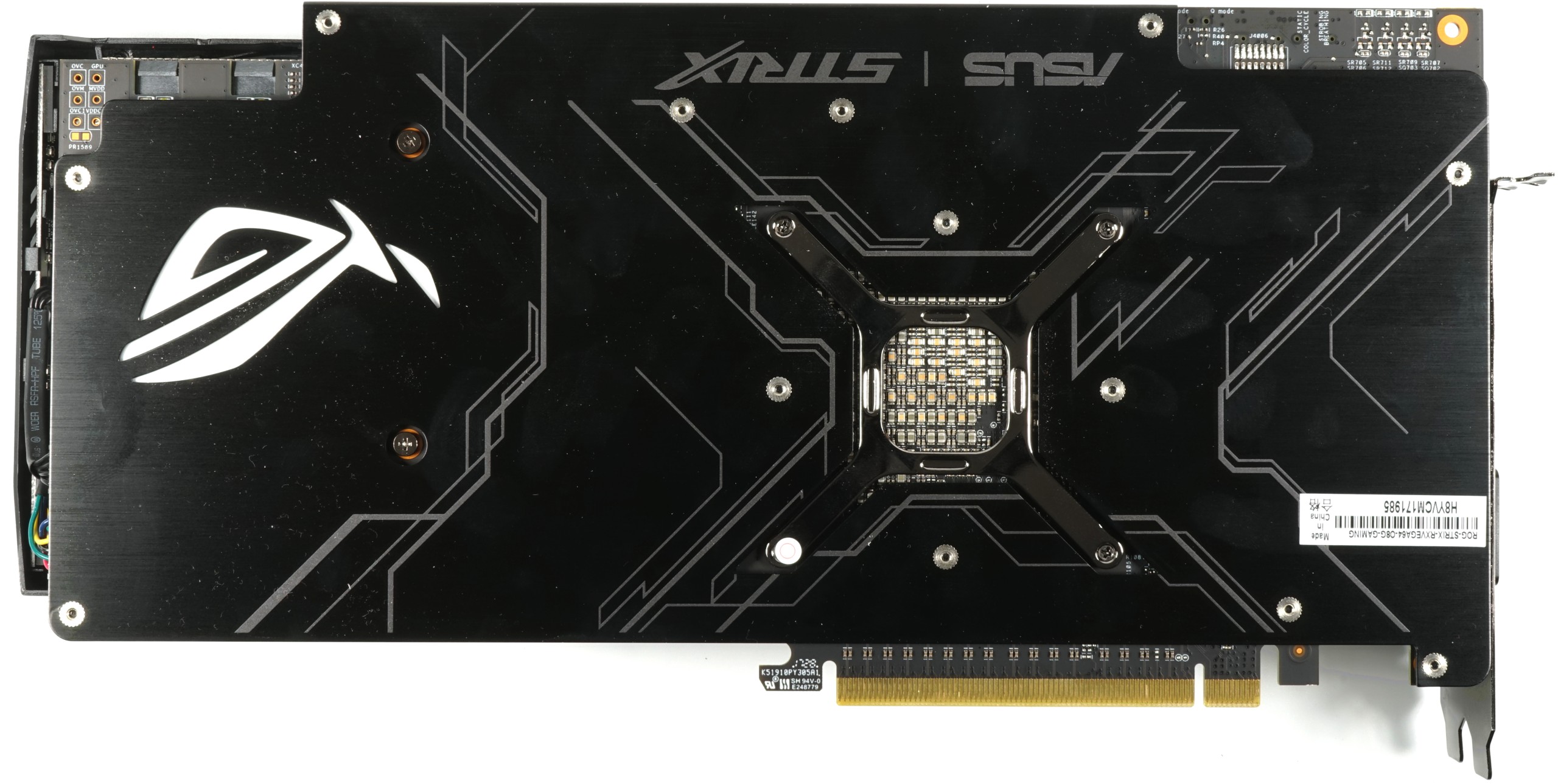
After all, one should plan at least 5 mm for the rear body, which can already lead to problems with some motherboards if heat sinks are sitting too close to the slot or the CPU cooler is extremely large.
You can already clearly see at the bottom of the map that Asus is betting on vertically arranged slats and now offers a real 2.5-slot model instead of the usual flat cards. This creates a significantly higher cooling surface.

The top also clearly shows that Asus has remained true to his form and design. In addition to the usual dark plastic cover, there are still RGB effects on the ROG lettering. In addition, the two 8-pin power supply connections are positioned here, which have been rotated and also moved downwards.

In addition to the five 6 mm heatpipes, the closed end of the card shows the two PWM-controlled fan connectors for optionally connectable housing fans, an RGB output, and the internal fan and LED connectors.
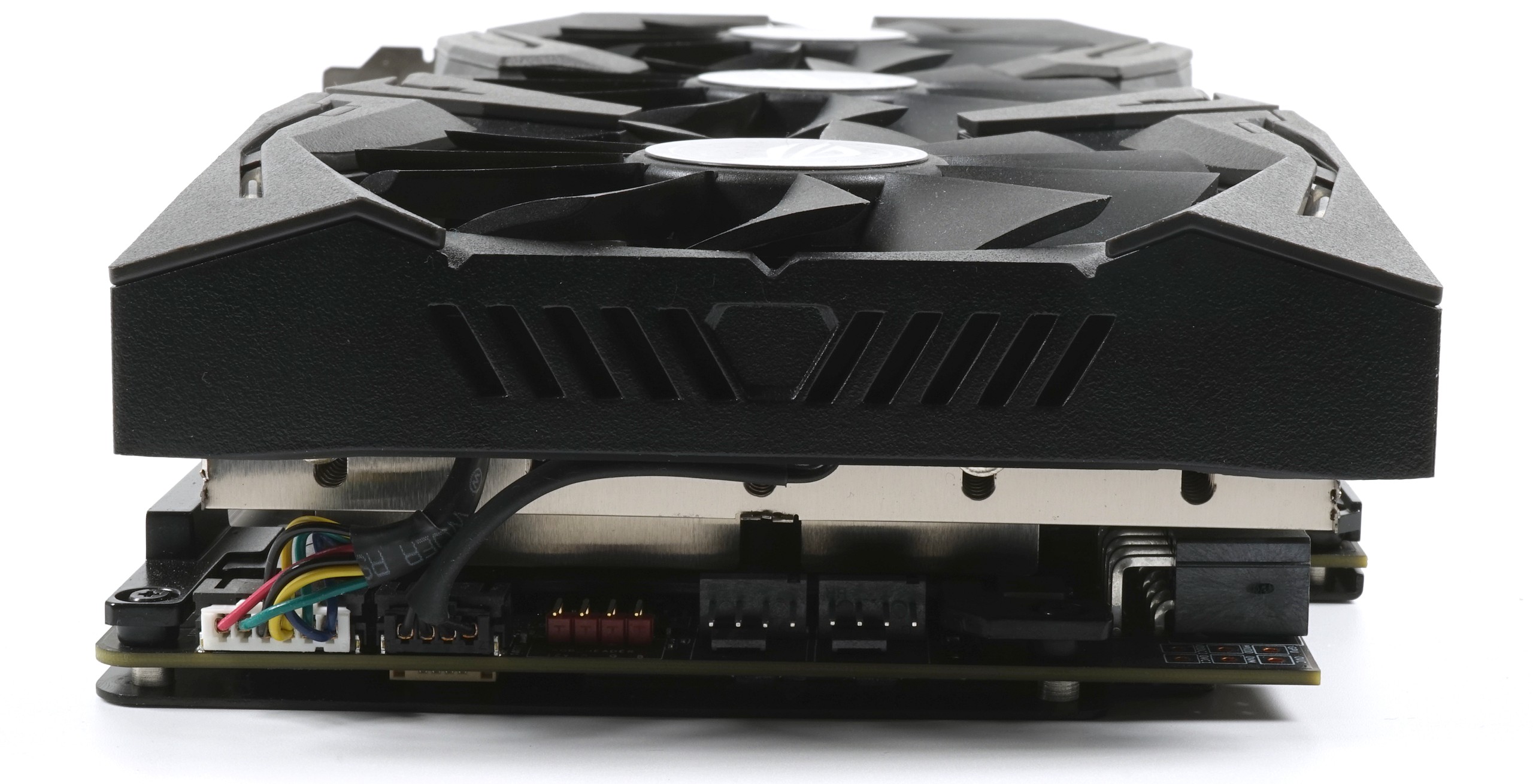
The slot panel has five ports analogous to the reference card. Two HDMI 2.0 ports and two DisplayPorts 1.4 are available to the user. This is completed by a DVI-I connector (Dual Link).
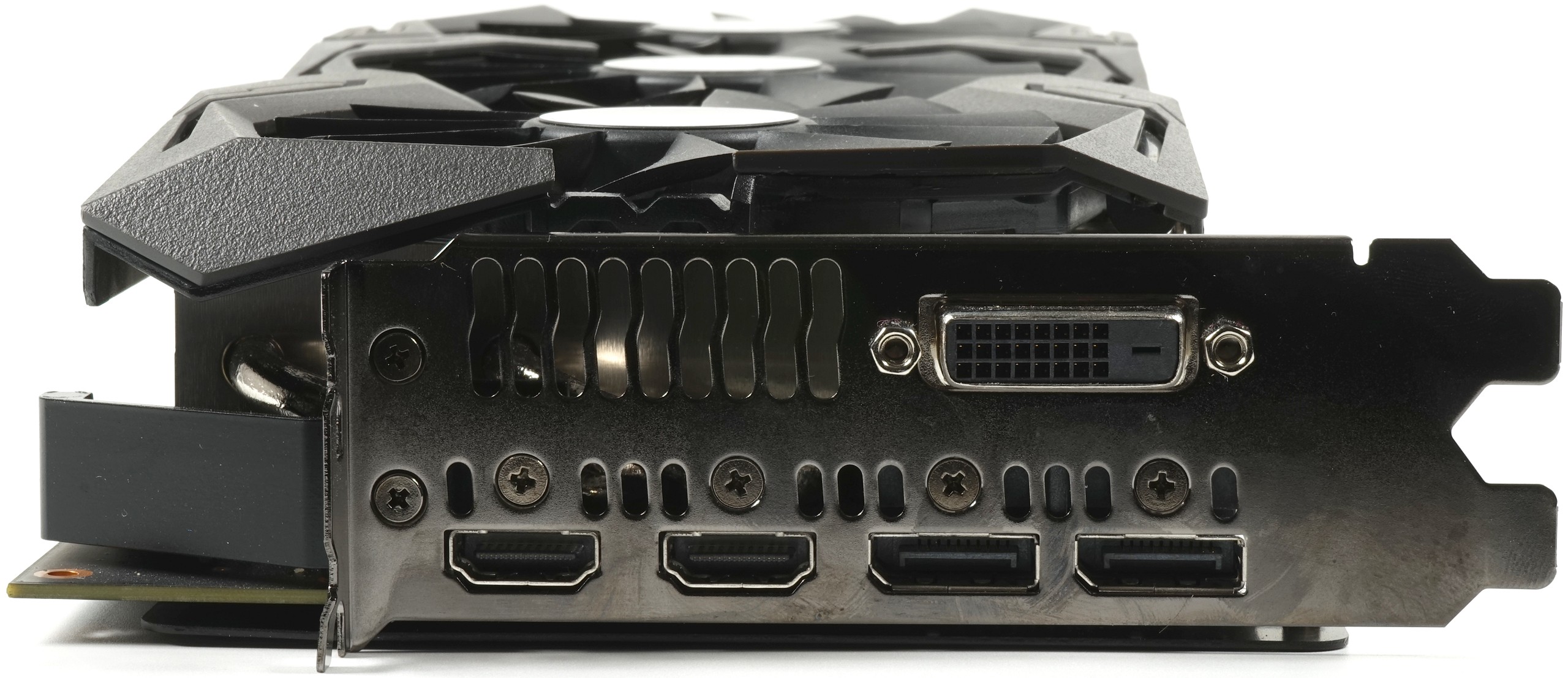
Finally, let us take a first look at the technical data. The value displayed as the maximum boost clock, on the other hand, is rather a wishful thinking, which is unlikely to be achieved within the set power limit or at all.
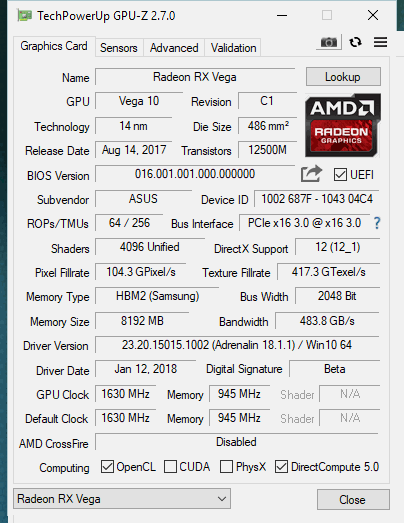
Compared to the relevant reference cards, this looks like this:
| Model | Radeon RX Vega64 Reference |
Asus RX Vega64 Strix OC |
Radeon RX Vega56 Reference |
Geforce GTX 1070 Ti |
Geforce GTX 1080 Fe |
|---|---|---|---|---|---|
| Gpu | Vega 10 | Vega 10 | Vega 10 | GP104 | GP104 |
| Chip size | 484 mm2 | 484 mm2 | 484 mm2 | 314 mm2 | 314 mm2 |
| Transistors | 12.5 billion | 12.5 billion | 12.5 billion | 7.2 billion | 7.2 billion |
| GPU base clock/ Boost clock |
1274 MHz 1546 MHz |
1274 MHz 1630 MHz |
1156 MHz 1471 MHz |
1607 MHz 1683 MHz |
1607 MHz 1733 MHz |
| Shader/SIMD | 4096/64 | 4096/64 | 3585/56 | 2432/19 | 2560/20 |
| Texture Units/ Rops |
256 64 |
256 64 |
224 64 |
152 64 |
160 64 |
| Pixel fill rate |
99 GPix/s | 104 GPix/s | 94 GPix/s | 108 GPix/s | 114 GPix/s |
| Texture Fill Rate | 396 GTex/s | 417 GTex/s | 330 GTex/s | 244 GTex/s | 257 GTex/s |
| Memory connection | 2048 Bit | 2048 Bit | 2048 Bit | 256 bits | 256 bits |
| Storage type | HBM2 | HBM2 | HBM2 | GDDR5 | GDDR5X |
| Memory bandwidth |
484 GB/s | 484 GB/s | 410 GB/s | 256 GB/s | 320 GB/s |
| Memory clock |
1.9 Gbps | 1.9 Gbps | 1.6 Gbps | 8 Gbps | 10 Gbps |
| Storage expansion |
8 GB | 8 GB | 8 GB | 8 GB | 8 GB |
| DX Feature Level | 12_1 | 12_1 | 12_1 | 12_1 | 12_1 |
| PCIe sockets | 2 x 8-pin | 2x 8 Pin | 2 x 8-pin | 1x 8-pin | 1x 8-pin |
| Tbp | 295 watts | 295 watts | 210 watts | 180 watts | 180 watts |
Test system and measurement methods
The new test system and the methodology have already been described in great detail in the basic article "How We Test Graphics Cards" (English: "How We Test Graphics Cards") and therefore, for the sake of simplicity, we now only refer to this detailed Description. So if you want to read everything again, you are welcome to do so. However, we have again improved CPU and cooling to largely exclude possible CPU bottlenecks for this fast card.
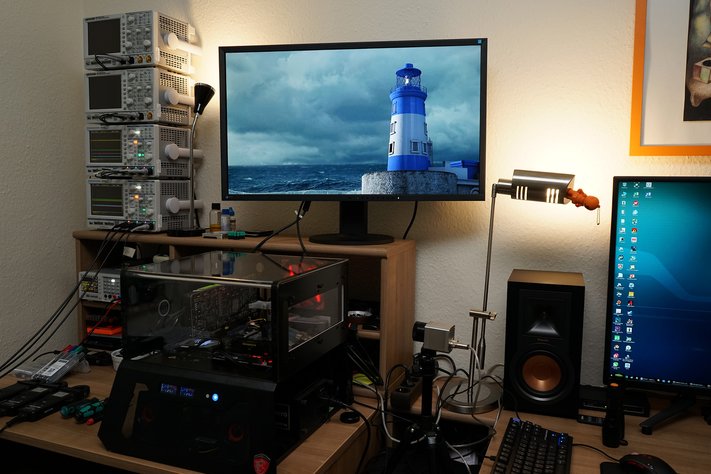
If you are interested, the summary in table form quickly provides a brief overview:
| Test systems and measuring rooms | |
|---|---|
| Hardware: |
Intel Core i7-6900K -4.3GHz MSI X99S XPower Gaming Titanium G.Skill TridentZ DDR4 3600 1x 1 TByte Toshiba OCZ RD400 (M.2, System SSD) 2x 960 GByte Toshiba OCZ TR150 (Storage, Images) Be Quiet Dark Power Pro 11, 850-watt power supply |
| Cooling: |
Alphacool Ice Block XPX 5x Be Quiet! Silent Wings 3 PWM (Closed Case Simulation) Thermal Grizzly Kryonaut (for cooler change) |
| Housing: |
Lian Li PC-T70 with expansion kit and modifications Modes: Open Benchtable, Closed Case |
| Monitor: | Eizo EV3237-BK |
| Power consumption: |
non-contact DC measurement on the PCIe slot (Riser-Card) non-contact DC measurement on the external PCIe power supply Direct voltage measurement on the respective feeders and on the power supply 2x Rohde & Schwarz HMO 3054, 500 MHz multi-channel oscillograph with memory function 4x Rohde & Schwarz HZO50, current togor adapter (1 mA to 30 A, 100 KHz, DC) 4x Rohde & Schwarz HZ355, touch divider (10:1, 500 MHz) 1x Rohde & Schwarz HMC 8012, digital multimeter with storage function |
| Thermography: |
Optris PI640, infrared camera PI Connect evaluation software with profiles |
| Acoustics: |
NTI Audio M2211 (with calibration file) Steinberg UR12 (with phantom power for the microphones) Creative X7, Smaart v.7 own low-reflection measuring room, 3.5 x 1.8 x 2.2 m (LxTxH) Axial measurements, perpendicular to the center of the sound source(s), measuring distance 50 cm Noise in dBA (Slow) as RTA measurement Frequency spectrum as a graph |
| Operating system | Windows 10 Pro (Creators Update, all updates) Radeon Software Adrenaline (17.12.2, status December 2017) |
- 1 - Einführung, Unboxing und technischen Daten
- 2 - Spannungsversorgung und detaillierte Platinenanalyse
- 3 - Gaming-Performance in WQHD (2560 x 1400 Pixel)
- 4 - Gaming-Performance in UHD (3840 x 2160 Pixel)
- 5 - Leistungsaufnahme im Detail
- 6 - Temperaturen, Taktraten, OC und Wärmebildanalyse
- 7 - Kühlerdetails und Geräuschentwicklung
- 8 - Zusammenfassung und Fazit






























Kommentieren